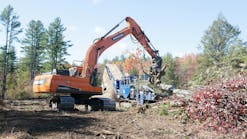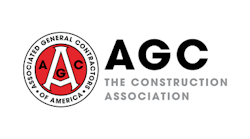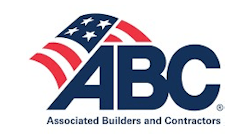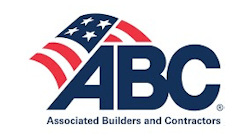When it comes to the skilled trades, there is often a misconception that it is a career for men and men only. Unfortunately, the numbers often back up this sentiment. According to the National Association of Women in Construction, about 9% of the construction workforce and 3% of the building trades are composed of women.
Despite this apparent gender gap in the workforce, there are signs that an increasing number of tradeswomen are being welcomed into these industries. Analysis from the Institute for Women’s Policy Research suggests that from 2017 to 2018 there was a 17.6% increase of women working in construction trades.
While this is encouraging progress, it does raise an important question: how is workwear evolving to meet the needs of this changing workforce? In the past, women have had limited options when it comes to work gear. Fortunately, there have been new developments in women’s workwear to create a proper fit for tradeswomen of all body types and sizes. In addition to safely outfitting workers, these innovations are creating a culture where women in the trades do not have to settle for the “workarounds” they have previously grown accustomed to.
The Importance of Fit
It is no secret that PPE is critical in the trades. It is often the last line of defense against potential workplace hazards. Beyond protection, a comfortable and proper fit can have a direct impact on performance, making the days feel shorter and the task at hand that much easier.
With this in mind, it is clear that in the past, the workwear category was undervalued and women were underserved. Despite safety being critical on the job site, many tradeswomen have found PPE is either uncomfortable and not designed for their sizes or body types. Clothes that do not fit can snag and reduce the ability to see your hands or feet. Additionally, many women’s work clothes do not have the same features as men’s clothes. It is more difficult to get into a flow state when you must stop and find something that would have easily fit in the pocket of men’s workwear.
Previously, much of the gear and equipment available for tradeswomen was made for their male counterparts and simply shrunk down to smaller sizes. This was less than ideal, considering that it meant women had to know their sizes across all safety gear and equipment and had few options besides dealing with poorly fitting work clothes that were not tailored to their anatomy.
Although there are often unisex options, this is not a guarantee they will offer a comfortable or safe fit for the women wearing them. Further, creating equipment and gear for women means more than shrinking men’s options down in size or simply offering colorways that come in pink options (but pink is still a great color for anyone who likes it!).
In addition to the safety considerations, providing workwear options specifically for women creates a more welcoming environment. It signifies that these essential workers are important and valued in their fields. This can go a long way towards creating a more inclusive and diverse workplace culture.
Developments in Workwear
Fortunately, there have been exciting developments in the realm of workwear in recent years. Modern workwear is shifting away from old-school fabrics such as denim and canvas that are heavy and restrictive. The evolution of workwear is leading to innovations that are designed for the ingenuity and high performance required of those in the skilled trades. Workwear needs to be more than just durable--breathability, mobility, and comfort are all essential features expected from those working in the trades today.
These innovations have also extended into women's workwear from work pants to jackets to shirts and more. For example, at my company, we have developed a women's fit line for a variety of workwear that is cool, comfortable, and designed for women of all body types and sizes. With the increase of direct-to-consumer retailers, the landscape of women's workwear is changing at a rapid pace and there are more options than ever for modern gear.
It is common for brands to portray women as DIYers and hobbyists focused on gardening or interior design. While this is high-skilled work that deserves respect, there are also women who work in fields such as carpentry, construction, plumbing, and more. These women should have workwear that is not only comfortable but benefits their performance as well.
In addition to enabling them to perform their jobs safely and effectively, outfitting women with gear specifically designed for their needs ensures they feel welcome in the trades. The ultimate goal is to ensure everyone with the aptitude and interest for skilled trades feels empowered and included, regardless of gender. When there is not comfortable or safe equipment available, women face unnecessary obstacles that can send a message suggesting they do not belong. To this end, reliable and properly fitting workwear can help contribute to uplifting the skilled trades and encouraging more women to join the community.
Looking Ahead
While there have been exciting advancements in workwear and the options available, this is only the beginning. Workwear is constantly evolving and advancing to better outfit workers of all genders and sizes to meet the rigorous requirements necessary to succeed on the job.
It is well-known that the US is facing a labor shortage. Women represent an untapped demographic of skilled workers who could be encouraged to join these trades, but without resources such as appropriate PPE, gear, and clothing, it subtly reinforces the idea that they are not welcome in these spaces. By closing the gap in reliable gear and tools for everyone, more women are encouraged to pursue careers in the trades, and it uplifts the community as a whole.
Diverse viewpoints contribute to a more successful workplace. The benefits of men and women working on job sites include new ways of approaching challenges and problem-solving. These differences, when combined to work towards a common goal, leads to stronger teamwork, better results, and a more welcoming environment. Ensuring that everyone can go to work in comfortable gear—that both fits and can get the job done—will ultimately go a long way towards elevating everyone in the skilled trades.











